bfdadmin
Dr Brandon Nelson, A Board-Certified Physician & Surgeon Discusses Things You Need To Know About Bunion Surgery
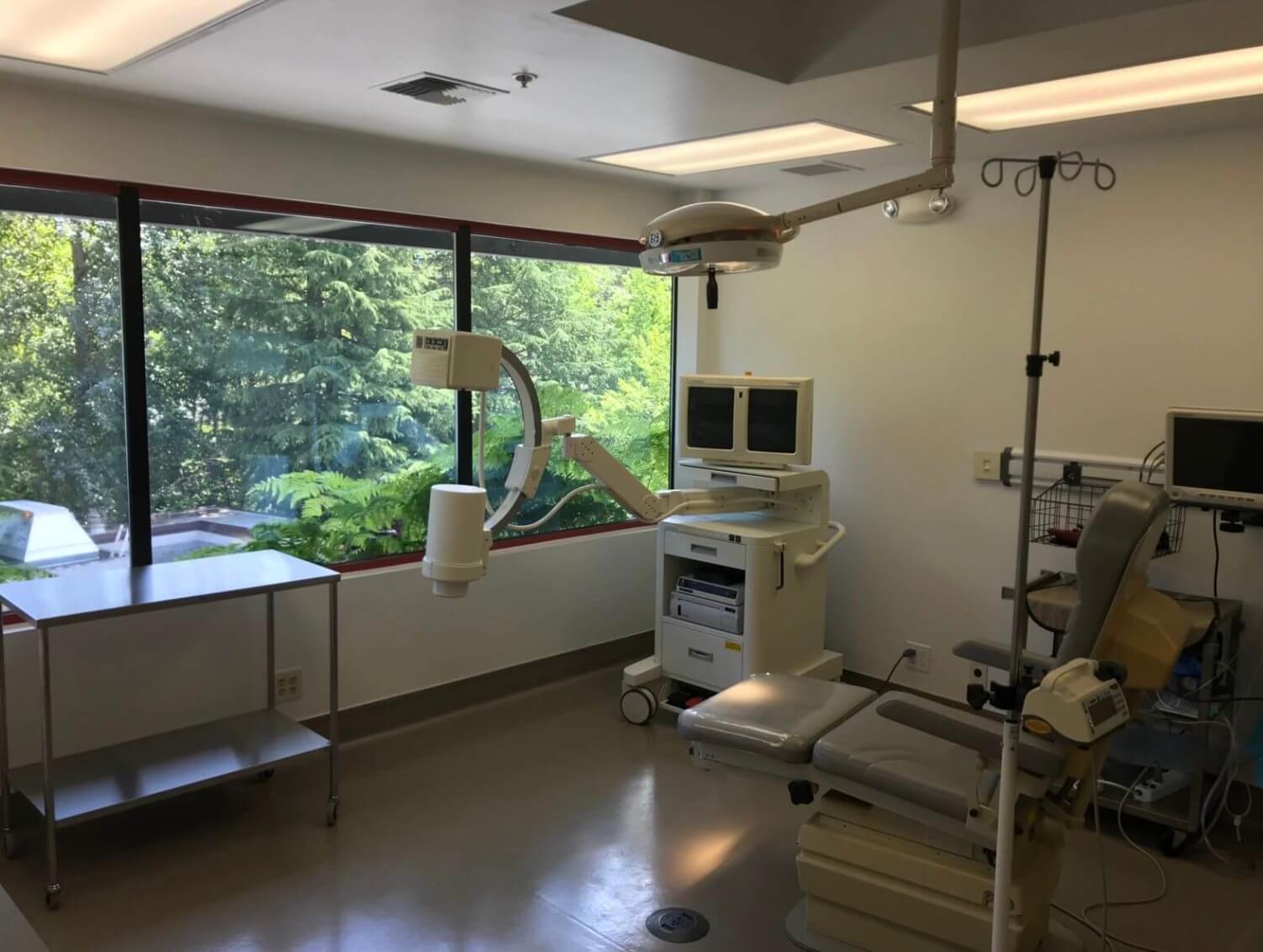
Surgery in general can be an overwhelming endeavor. There are often a lot of new instructions, medications, and appointments to keep track of. I have a few recommendations that can be helpful for anybody undergoing bunion surgery.
One of the first things to do is make a list. I love it when my patients show up with a list of questions at their pre-op appointment. This helps to make sure all topics are covered, and nothing is a mystery come surgery day. In that list often is a shopping list is helpful things like bandages, supplements, otc medications and healthy foods.
Getting a base of operation set up before surgery can help with easing the recovery. I recommend a place on the 1st floor if you have multiple levels. Somewhere that is close to the bathroom and is relatively quiet to aid in recovery. Ideally you have room for your post-op supplies nearby. It is also nice to have something in the room to help pass the time like a TV or music.
Personal hygiene is another area to touch on. I find it helpful for my patients to have some sort of stool to sit on in the shower. This helps reduce pressure on the operated foot. Additionally, if you are non-weight, bearing a toilet seat can be helpful. Practice, practice, and practice have some dry runs of showering and using the toilet before surgery to see if you need any other items. I think it is trickier than most of us remember to be off one foot.
Lastly a few miscellaneous tips;
1. Couch potato for the first 72 hours.
2. Elevating makes a big difference in long term swelling.
3. Take any recommended supplements.
4. Do not change the dressings unless instructed.
5. Lots of fluids.
6. Take a stool softener.
I hope these were helpful. If you are experiencing bunion pain, I can help call to make an appointment with me at 425-391-8666 or contact us online.
Sincerely,
American College of Foot & Ankle Surgeons
Dr Timoth Young, Board Certified Foot Surgeon talks about Lapidus and Lapiplasty Fixation: Advancements in Foot and Ankle Surgery Part 2
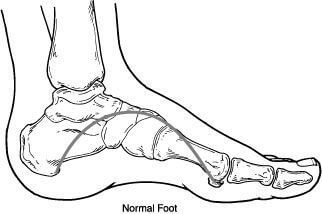
Dr Timoth Young, Board Certified Foot Surgeon talks about Lapidus and Lapiplasty Fixation: Advancements in Foot and Ankle Surgery Part 2
Benefits of Lapidus and Lapiplasty Fixation:
Improved Alignment: Both procedures aim to correct the alignment of the foot bones, which not only relieves pain but also helps restore normal foot function.
Faster Recovery: Lapidus and Lapiplasty procedures enable patients to return to weight-bearing activities sooner than traditional methods, reducing downtime.
Reduced Risk of Recurrence: Lapiplasty fixation, in particular, targets the underlying cause of bunions, reducing the likelihood of recurrence.
Long-Term Results: The fusion achieved through these fixation methods creates stable and lasting joint alignment, offering enduring relief from pain and discomfort.
Minimal Soft Tissue Disruption: These procedures typically involve less disruption of soft tissues, leading to reduced scarring and a potentially smoother recovery process.
Conclusion: Lapidus and Lapiplasty fixation procedures are innovative approaches to correcting foot and ankle deformities, especially bunions. With their focus on achieving proper bone alignment and stability, these procedures offer patients improved quality of life, reduced pain, and faster recovery times. If you're experiencing foot and ankle issues, consult a qualified orthopedic surgeon to determine whether Lapidus or Lapiplasty fixation could be the right solution for you. Always remember that personalized medical advice is crucial before making any decisions regarding surgical interventions.
If you are experiencing foot or ankle pain, give us a call today at 425-391-8666 or make an appointment online.
Dr Timoth Young, Board Certified Foot Surgeon talks about Lapidus and Lapiplasty Fixation: Advancements in Foot and Ankle Surgery

Dr Timoth Young, Board Certified Foot Surgeon talks about Lapidus and Lapiplasty Fixation: Advancements in Foot and Ankle Surgery Part 1
Introduction: Foot and ankle disorders can significantly impact a person's quality of life, affecting their ability to walk, stand, and perform daily activities. Over the years, surgical techniques and technologies have evolved to address these issues effectively. One of the notable advancements in foot and ankle surgery is the Lapidus and Lapiplasty fixation procedures. In this blog, we'll delve into what these procedures are, how they work, and their benefits for patients.
Lapidus Fixation: The Lapidus procedure, also known as the first tarsometatarsal (TMT) joint arthrodesis, is a surgical technique designed to correct deformities in the first metatarsal and medial cuneiform bones of the foot. This procedure is commonly used to treat conditions such as hallux valgus (bunions) and hypermobility of the first TMT joint. The primary goal of the Lapidus procedure is to achieve stability in the joint, alleviate pain, and improve the alignment of the foot.
During the Lapidus procedure, a surgeon makes an incision on the top of the foot near the first TMT joint. The joint is then realigned, and screws or other fixation devices are used to hold the bones in their corrected positions. Over time, the bones fuse together, creating a stable and properly aligned joint. This fusion eliminates the pain associated with joint movement and provides long-lasting relief.
Lapiplasty Fixation: The Lapiplasty procedure is a modern advancement in foot surgery that specifically targets bunions by addressing the root cause of the deformity. Unlike traditional bunion surgeries that focus on removing the bony bump, the Lapiplasty procedure aims to correct the misalignment of the metatarsal bone responsible for the bunion formation. This technique not only provides a more aesthetic result but also reduces the risk of bunion recurrence.
During the Lapiplasty procedure, a surgeon makes a precise cut in the metatarsal bone to realign it to its proper position. Specialized instrumentation is used to stabilize the bone, and fixation plates and screws are inserted to secure the corrected alignment. This approach allows patients to bear weight on the treated foot shortly after surgery, resulting in a faster recovery compared to traditional methods.
If you are experiencing foot or ankle pain, give us a call today at 425-391-8666 or make an appointment online.
Dr. Brandon Nelson, A Board-Certified Physician & Surgeon Discusses How The Lapiplasty Can Fix Your Bunion

Bunions are one of the most painful foot conditions for patients that are active and can be extremely challenging for shoe gear. This is related to the fact that the forefoot begins to widen, and the 1st metatarsal phalangeal joint can become dislocated. If you are experiencing these issues, it could be time to consider fixing the problem permanently.
Bunion surgery techniques have changed dramatically over the last 5 years. This is primarily due to the advent of Lapiplasty. Historically the Lapidus bunion procedure has had an outstanding result. However, the limiting factor was recovering times. The new Lapiplasty system has changed this and improved outcomes and decreased recovery times. This has led me to change my technique to take advantage of this newer system to help my patients.
My patients have been extremely happy with the newer system. They have seen the normal recovery time cut in half. I used to see patients get into normal shoes at about 3 months and now this is around 6 weeks. If you want a quicker return to normal shoes, come, see me and we can evaluate whether you are a candidate for lapiplasty. I truly believe the best long-term results can be achieved and this is correlated with better stability of the foot. Bunion surgery has never been easier!
If you are experiencing bunion pain, I can help call to make an appointment with me at 425-391-8666 or fill out a contact form online.
Sincerely,Dr Brandon Nelson
American College of Foot & Ankle Surgeons
Dr Brandon Nelson, A Board-Certified Physician & Surgeon Discusses Bunion Pain and How to Fix It
.jpg)
Bunions are often a painful condition especially when trying to fit certain shoes or exercise. Let us first discuss what a bunion is then how we can relieve the pain.
A bunion results from a combination of familial inheritance and environmental factors. Meaning that if you do not have a genetic predisposition for a bunion, you will not create one by adding outside forces to your foot. Where this becomes important for example is high heel shoes. If you have a family history of bunions and you wear high heels you can accelerate the process of development of the bunion. Or if you are an avid exerciser like a runner this can speed up the development of a bunion.
So what is a bunion? Well, there is a common misconception that a bunion is growth. This is not true nothing grows with a bunion it is from a misaligned bone in the foot. The culprit is the 1st metatarsal. This bone begins to shift out of place and cause a bulge on the inside of the foot and continues to get worse until the big toe has rotated. The bunion will get bigger as time goes on and often can begin to force the other toes out of position. Bunions at this point become painful and hard to fit in shoes.
What can be done for bunion pain? There are a lot of different things I can provide to relieve bunion pain. It really requires an evaluation of the bunion. But generally, wider shoes can help and prevent going barefoot. There are other options that provide more relief, but it really depends on the stage of the bunion.
If you are experiencing bunion pain I can help call to make an appointment with me at 425-391-8666 or fill out a contact form online.
Sincerely,Dr Brandon Nelson
American College of Foot & Ankle Surgeons
Dr Brandon Nelson, A Board Certified Physician & Surgeon discusses Hammer Toes
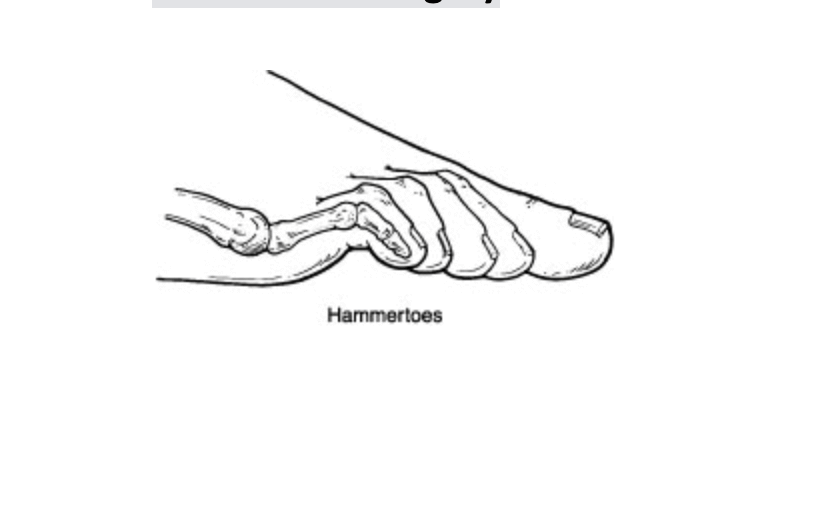
Hammer toes are a curling of the digits of the feet. Specifically the middle of the toes bend downwards and from the side looks similar to a hammer. There are other digital deformities as well like claw toes and mallet toes. But today we will just discuss hammer toes.
Most of the time it is an inherited foot structure that causes hammer toes. An example of this is a flatfoot. A person is born with a flat foot and over time the tendons that run to the toes have been working to create an arch for so long the toes permanently deform creating a hammer toe. There are other causes but the number one cause is the flexor tendons on the bottom of the toe overpowering the other tendons. Once the tendon imbalance occurs hammer toes are the results.
There are a few options for treatment of hammer toes. It is based upon the flexibility of the hammer toe. Is the hammer toe flexible or rigid? If the hammer toe is flexible you can release a tendon and the toe will lay flat. However if the hammer toe is rigid you must remove a small piece of bone in order to get correction. I also recommend looking at the foot structure that is influencing the hammer toe and correct that as well.
If you have hammer toes and would like to discuss how I can help make an appointment with me today. Give us a call at 425-391-8666 or make an appointment online today.
Sincerely, Dr. Brandon Nelson
Dr Brandon Nelson, A Board Certified Physician & Surgeon, and the Lapiplasty Procedure for Bunion Correction
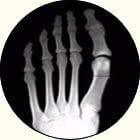
Today we find ourselves in a new era of healthcare. We have robots and small cameras and new instruments to utilize to improve outcomes and simplify procedures. When I completed residency 15 years ago we were introduced to these new devices. It has been interesting to see the evolution of these tools and new and exciting tools enter healthcare. One of the most advanced instrument sets I have seen is the Lapiplasty system by Treace Medical. This has revolutionized bunion surgery and made the surgeons part much easier and more reproducible.
The lapiplasty system is based on the lapidus procedure that was first described by Paul Lapidus almost 100 years ago. This procedure has been utilized in the Pacific Northwest for years. When I began my training the lapidus procedure for bunion correction was very popular as it provided great outcomes with low recurrence rates. The new lapiplasty system is based on the original surgical procedure but has tools that make the surgery easier to execute and recovery faster for patients.
The advantages of patients are numerous and I will discuss a few. First off any surgery should be reproducible. The jig and cutting system of the Lapiplasty has taken away the variability among surgeons and removed eyeballing of bone cuts. This makes for better long term outcomes and reliable positioning of bones for correction of bunions. Secondly it provides better fixation that allows faster recovery. Traditionally the Lapidus procedure can take quite a long time to transition to weight bearing and a normal shoe. This is a big advantage for the new Lapiplasty and one of my most favorite parts of the system.
If you have a bunion and would like to discuss Lapiplasty make an appointment with me today. Give us a call at 425-391-8666 or make an appointment online today.
Sincerely,
Dr. Brandon Nelson
Dr Brandon Nelson, A Board-Certified Physician & Surgeon Discusses Plantar Fasciitis and Heel Spurs
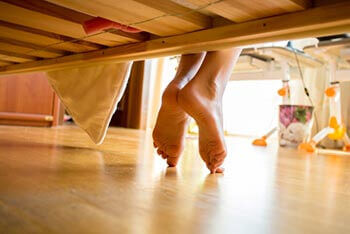
Heel pain and heel spur syndrome are painful conditions that can affect everyday life and make walking and exercise miserable. I see patients that have been suffering for years from this and have tried to live with it. I encourage anybody with heel pain or bone spurs to seek help earlier as it is much easier to rectify this situation with early intervention.
Heel pain is often caused by plantar fasciitis. The plantar fascia is a large thick band of connective tissue that helps to hold up the arch. It is activated when you walk or exercise to provide dynamic control of the foot. It can become extremely painful with overuse and create a considerable cycle of pain. Usually, the pain is worse in the morning, then gets a little better as the day goes on but returns anytime you sit down or rest. Currently there are many great treatment options for fasciitis, however the underlying cause needs to be identified.
Heel spur syndrome often occurs with plantar fasciitis. This is when a bone spur develops on the heel bone or calcaneus. It is often on the site where the plantar fascia attaches and can be a result of long-term tension from the fascia. It can be difficult to determine if it is the bone spur or the fascia that is inflamed. Both can be present at the same time and often testing is needed to differentiate the sources of pain.
I understand that heel pain can be life altering and am here to help.
If you have heel pain, and want to get back to enjoying your life, make an appointment with me today at 425-391-8666 or book an appointment online.
Dr. Brandon Nelson
Issaquah Foot and Ankle Specialists
Dr Brandon Nelson, A Board-Certified Physician & Surgeon Discusses Key Steps in the Lapiplasty Bunion Procedure

Bunion surgery has been performed for years and many different types of surgical techniques exist. The last few years a newer procedure called the Lapiplasty has been pushed to the forefront of surgical correction. It involves previously researched correction techniques combined with a newer jig for bone cuts. It is the fastest growing bunion surgery in the United States. There are a few key steps that make a difference in the correction that must be carefully followed.
The first key step is freeing up the joint so it can be rotated in 3 different planes to correct the triplane bunion deformity.
The second involves making sure to release and mobilize soft tissue around the big toe.
Next provisional reduction needs to be done and fixated with a clamp to apply the cutting jig. Once the correction is obtained the jig is placed and the bone is cut.
The wedges of bone are removed, and the joint is fenestrated to promote fusion and graft can be placed.
The joint is then compressed, and correction again obtained, and fixation occurs with plates and screws.
The advantages of this system are reproducibility and stable fixation which allows earlier weight bearing.
If you have a bunion and are in pain, I can help. Make an appointment with me today at 425-391-8666 or fill out a contact form online.
Dr Brandon Nelson
Issaquah Foot and Ankle Specialists
Dr Brandon Nelson, A Board-Certified Physician & Surgeon Discusses Bunion Surgery, The Lapiplasty
.jpg)
Surgery for a bunion is most used for long term correction, meaning realigning the bone for the foot to function in a stabilized fashion. Many bunion surgeries are what is called a head procedure. This is when the metatarsal head is cut and pinned or screwed in place. The procedure itself is straightforward and can usually be done in under an hour. The average person will be walking the entire post operative phase and can be in a normal shoe in 4-6 weeks typically.
Should I fix my bunion?
I think the answer to this question is does it hurt or do you have a hard time fitting in shoes or doing the activities you enjoy because of the bunion? Most people with a bunion at some point will answer yes to this question and that is a good time to think about fixing it. The other consideration is do other parts of my foot hurt because of the bunion or are my toes changing position because of my bunion? Again if this is happening now maybe the time to fix it.
Is Surgery going to hurt?
Yes, surgery is going to be uncomfortable. However, we work very closely with our post-operative patients to make sure their pain is well controlled during recovery. It is imperative that patients get a head of the pain and take all medications that are prescribed.
How long does it take to recover?
This is a harder question to answer. There are many factors that lead to recovery but in general. Some patients are walking on their feet immediately and some must wait weeks. The return to shoe can be as early as 4 weeks or longer like 10-12 weeks. Most sports or activities have no limitation at 3 months.
Does bunion surgery need to be done at the hospital?
A lot of surgeons still use the hospital or outpatient surgery center for bunion surgery. These facilities can be very expensive. My practice has a surgical suite which saves large amounts of money and time for every patient.
If you have a bunion and are in pain, I can help. Make an appointment with me today at 425-391-8666 or fill out a contact form online.
Sincerely,Dr Brandon Nelson
American College of Foot & Ankle Surgeons



